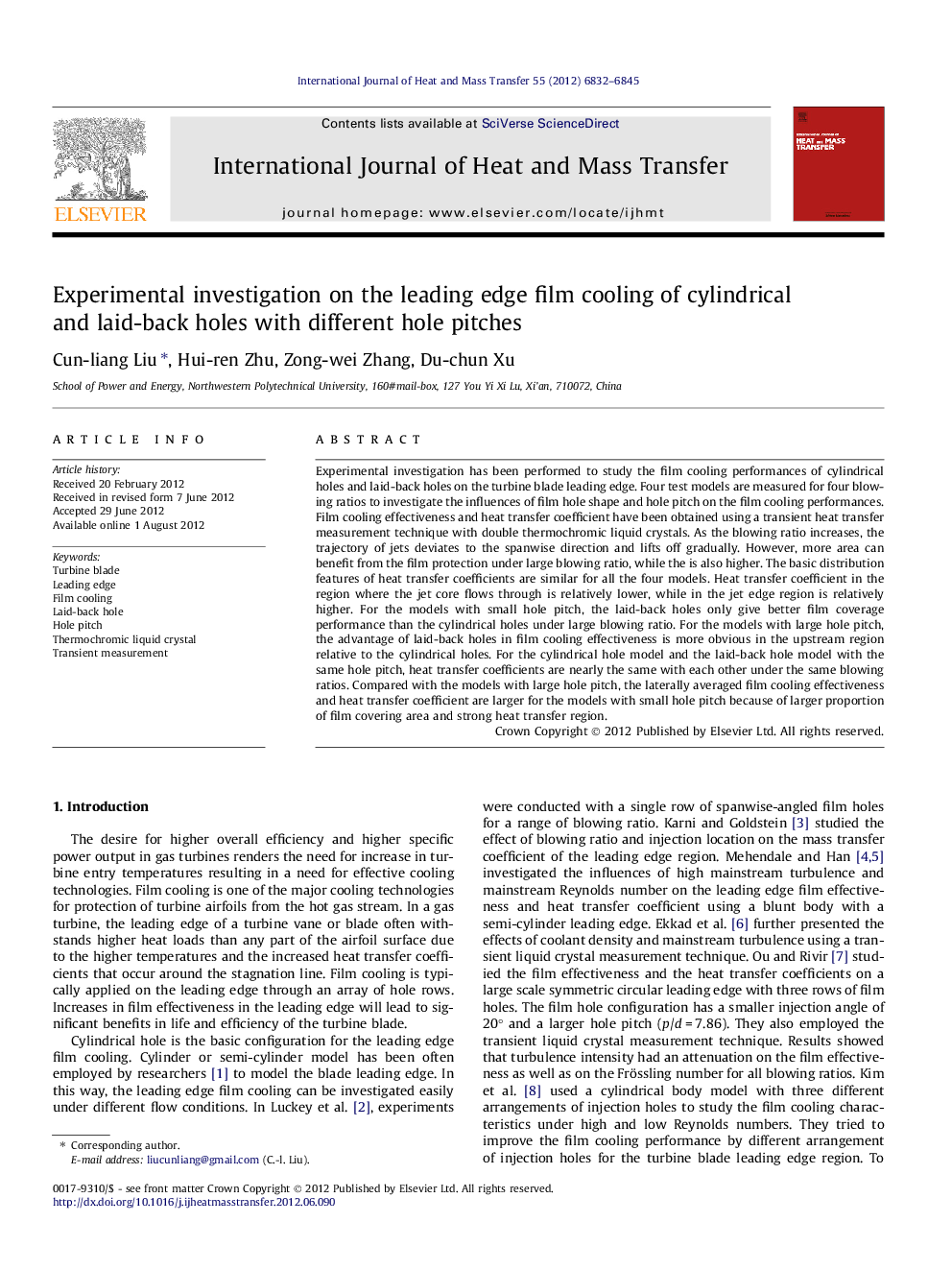| Article ID | Journal | Published Year | Pages | File Type |
|---|---|---|---|---|
| 658712 | International Journal of Heat and Mass Transfer | 2012 | 14 Pages |
Abstract
Experimental investigation has been performed to study the film cooling performances of cylindrical holes and laid-back holes on the turbine blade leading edge. Four test models are measured for four blowing ratios to investigate the influences of film hole shape and hole pitch on the film cooling performances Film cooling effectiveness and heat transfer coefficient have been obtained using a transient heat transfer measurement technique with double thermochromic liquid crystals. As the blowing ratio increases, the trajectory of jets deviates to the spanwise direction and lifts off gradually. However, more area can benefit from the film protection under large blowing ratio, while the is also higher. The basic distribution features of heat transfer coefficients are similar for all the four models. Heat transfer coefficient in the region where the jet core flows through is relatively lower, while in the jet edge region is relatively higher. For the models with small hole pitch, the laid-back holes only give better film coverage performance than the cylindrical holes under large blowing ratio. For the models with large hole pitch, the advantage of laid-back holes in film cooling effectiveness is more obvious in the upstream region relative to the cylindrical holes. For the cylindrical hole model and the laid-back hole model with the same hole pitch, heat transfer coefficients are nearly the same with each other under the same blowing ratios. Compared with the models with large hole pitch, the laterally averaged film cooling effectiveness and heat transfer coefficient are larger for the models with small hole pitch because of larger proportion of film covering area and strong heat transfer region.
Related Topics
Physical Sciences and Engineering
Chemical Engineering
Fluid Flow and Transfer Processes
Authors
Cun-liang Liu, Hui-ren Zhu, Zong-wei Zhang, Du-chun Xu,
